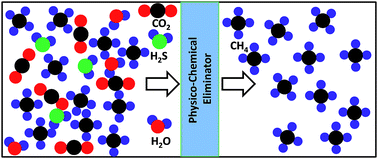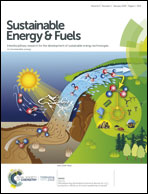Physico-chemical elimination of unwanted CO2, H2S and H2O fractions from biomethane
Abstract
Biomethane, the principal component of biogas, is one of the major alternatives to fossil fuel. Reducing the amount of carbon dioxide (CO2), hydrogen sulfide (H2S) and water (H2O) content from their mixture with methane (CH4) in biogas is necessary for ensuring their practical applications as fuels and the minimum methane (CH4) content is stipulated to be 95%. Herein, a facile process for the combined removal of CO2, H2S and H2O by using two different sets of purifying mixtures including calcium hydroxide (Ca(OH)2) + activated carbon + silica gel for experiment T1 and Ca(OH)2 + zero-valent iron (Fe0) + sodium sulphate (Na2SO4) for experiment T2 is presented. The CO2 concentration was reduced from 33% in raw biogas to 2.65 and 4.8% in biogas treated in T1 and T2, respectively. The corresponding H2S concentration falls from 365 ppm to 14 and 29 ppm, while H2O content decreased from 5% to 0.03 and 0.87%. As a result of this physico-chemical minimization of the unwanted gas fraction, the overall biomethane concentration increased from 62% in raw biogas to 97.55 and 95.02% in the purified gas after the accomplishment of the purification process by experiments T1 and T2, respectively. We propose that this purification method can be applied in a small farmland or rural area to obtain purified biomethane.

- This article is part of the themed collection: 2018 Sustainable Energy and Fuels HOT Articles


 Please wait while we load your content...
Please wait while we load your content...